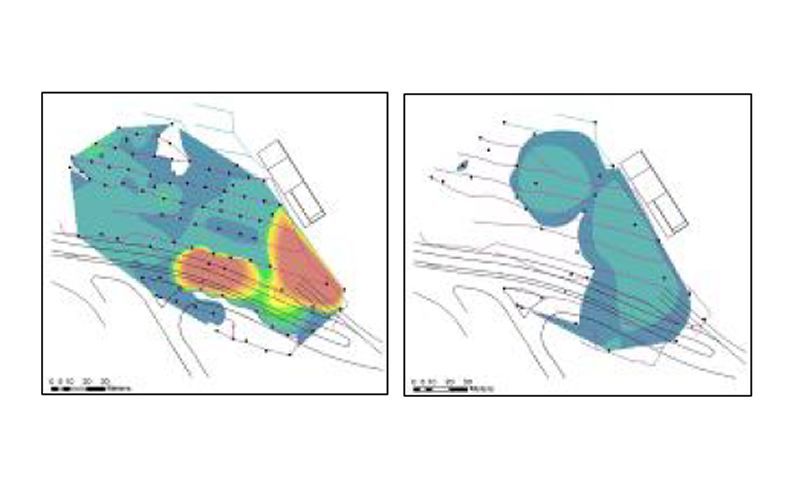Site area: 1,100m2 treatment area; total site area 45 hectares
Timeframe: June and December 2010
Chemical treatment: potassium permanganate, Fenton’s Reagent
Overview
GeoStream is the UK supplier of premium insitu remediation substrates, including potassium permanganate. Used in their pure form, these chemicals will eradicate high concentrations of chlorinated solvents, and free and dissolved phase hydrocarbons.
The below case study from WSP and Carus shows how these chemicals can be applied in-situ on a large scale:
Challenge
The London 2012 Olympics presented a huge groundwater remediation challenge, with a strict build programme to adhere to.
Since the 19th century, the site of the main stadium had housed a dye works, oil refinery, various chemical works and a scrap metal facility. The resulting range and concentrations of groundwater contaminants presented significant environmental risk. These included chlorinated solvents and dissolved phase hydrocarbons, which existed at concentrations above solubility within a highly permeable aquifer. Groundwater remediation was vital to address the risks, and it needed to be undertaken whilst the main Olympic stadium and associated structures were being built.
Approach
Contamination delineation works were conducted, with an area of heavily impacted groundwater identified. These included chlorinated solvents, free and dissolved phase hydrocarbons, polycyclic aromatic hydrocarbons and arsenic. Contaminant concentrations often exceeded solubility
An initial strategy was developed to contain contamination by installing a hydraulic containment system to reverse the hydraulic gradient and contaminant migration
Hydraulic containment was followed up with more aggressive works to reduce source zone contamination when the building schedule allowed
Viability of chemical oxidation source treatment was confirmed through bench scale tests and field trials. Tests were conducted to determine soil oxidant demand (the most limiting factor in the use of Chemox) and the best oxidant to destroy contaminants present
Bench testing demonstrated potassium permanganate performed well in the destruction of PAHs and chlorinated ethenes (TCE, cis-DCE etc.) whilst Fenton’s Reagent was highly efficient in the destruction of the aliphatic hydrocarbons and chlorinated ethanes, such as 1,1,1 trichloroethane
An aggressive in-situ chemical oxidation programme was pursued in the source area, injecting two rounds of Fenton’s Reagent where aliphatic hydrocarbons and chlorinated ethanes persisted, followed by potassium permanganate to destroy contaminants across the entire source area
A network of 110 permanently buried injection points was installed across a 1,100m2 treatment area. Each had a dedicated injection line to enable complete control of oxidant dosing, including inline mixing and injection
Results
Verification works show very high rates of contaminant destruction for most chemicals of concern, with only a handful of minor exceedances left


